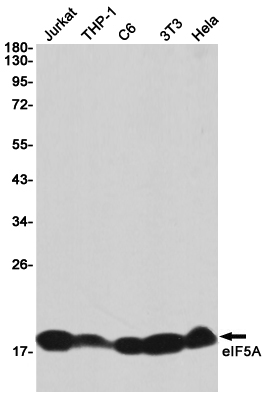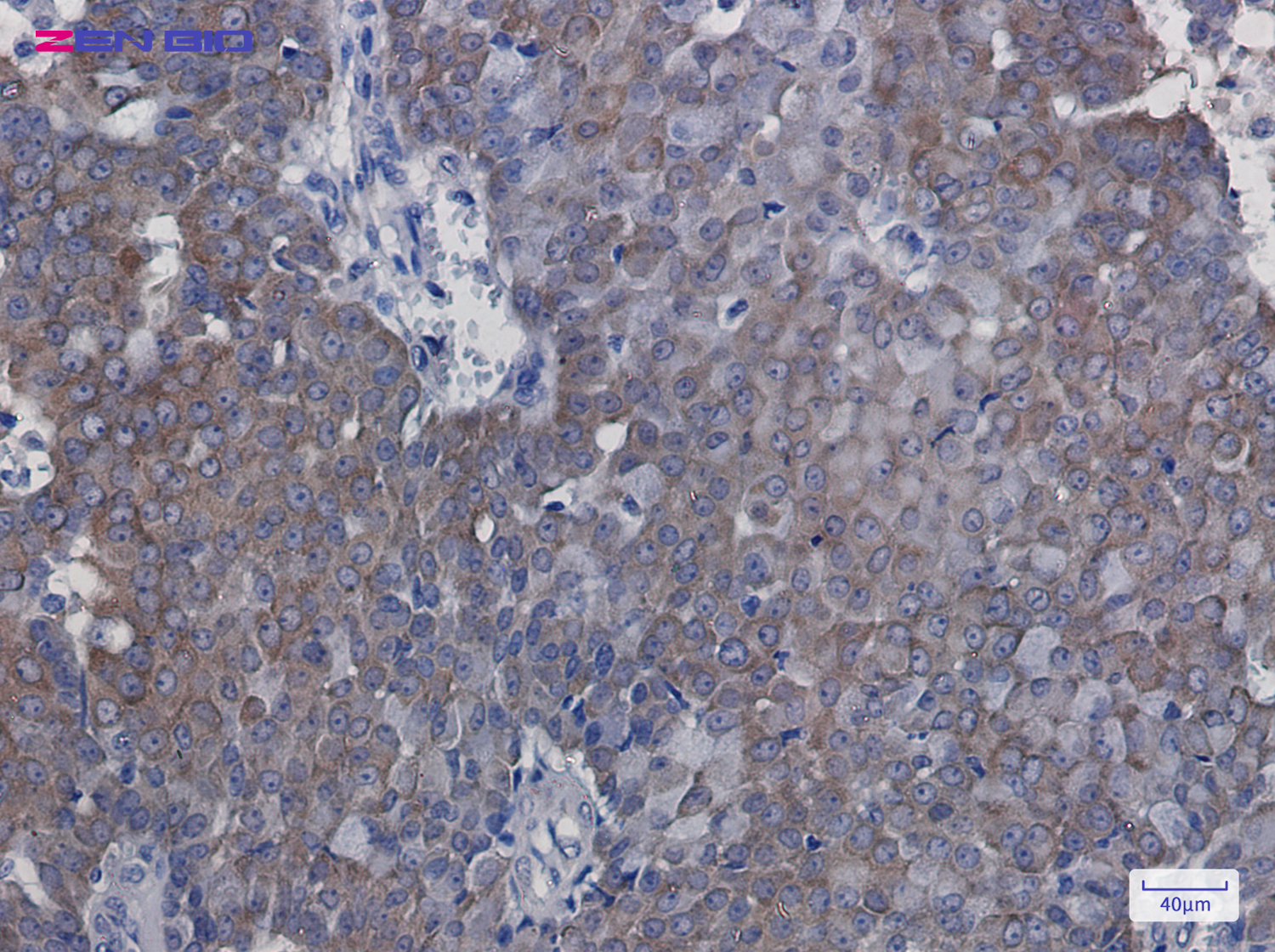-
Product Name
Anti-eIF5A Rabbit antibody
- Documents
-
Description
eIF5A Rabbit polyclonal antibody
-
Tested applications
WB, IHC-P, FC, IP
-
Species reactivity
Human, Mouse, Rat
-
Isotype
Rabbit IgG
-
Preparation
Antigen: A synthetic peptide of human eIF5A
-
Clonality
Polyclonal
-
Formulation
Supplied in 50nM Tris-Glycine(pH 7.4), 0.15M Nacl, 40%Glycerol, 0.01% sodium azide and 0.05% BSA.
-
Storage instructions
Store at -20°C. Stable for 12 months from date of receipt.
-
Applications
WB: 1/2000
IHC: 1/20
FC: 1/20
IP: 1/20
-
Validations

Western blot detection of eIF5A in Jurkat,THP-1,C6,3T3,Hela cell lysates using eIF5A Rabbit pAb(1:1000 diluted).Predicted band size:17KDa.Observed band size:17KDa.

Immunohistochemistry of eIF5A in paraffin-embedded Human breast cancer tissue using eIF5A Rabbit pAb at dilution 1/100

Western blot detection of eIF5A in Jurkat cell lysates using eIF5A Rabbit pAb(1:1000 diluted).Predicted band size:17KDa.Observed band size:17KDa.
-
Background
Swiss-Prot Acc.P63241.mRNA-binding protein involved in translation elongation. Has an important function at the level of mRNA turnover, probably acting downstream of decapping. Involved in actin dynamics and cell cycle progression, mRNA decay and probably in a pathway involved in stress response and maintenance of cell wall integrity. With syntenin SDCBP, functions as a regulator of p53/TP53 and p53/TP53-dependent apoptosis. Regulates also TNF-alpha-mediated apoptosis. Mediates effects of polyamines on neuronal process extension and survival. May play an important role in brain development and function, and in skeletal muscle stem cell differentiation. Also described as a cellular cofactor of human T-cell leukemia virus type I (HTLV-1) Rex protein and of human immunodeficiency virus type 1 (HIV-1) Rev protein, essential for mRNA export of retroviral transcripts.
Related Products / Services
Please note: All products are "FOR RESEARCH USE ONLY AND ARE NOT INTENDED FOR DIAGNOSTIC OR THERAPEUTIC USE"
